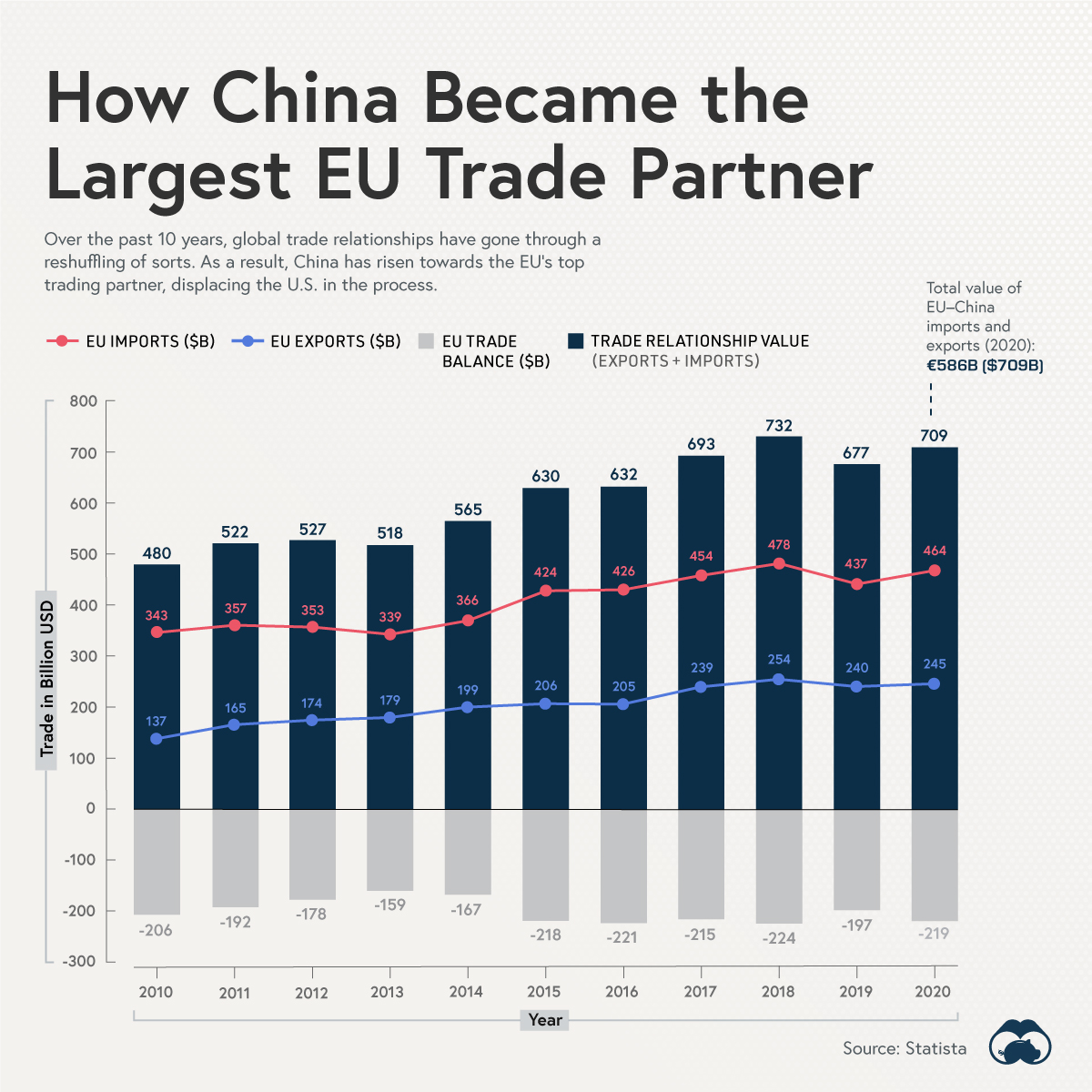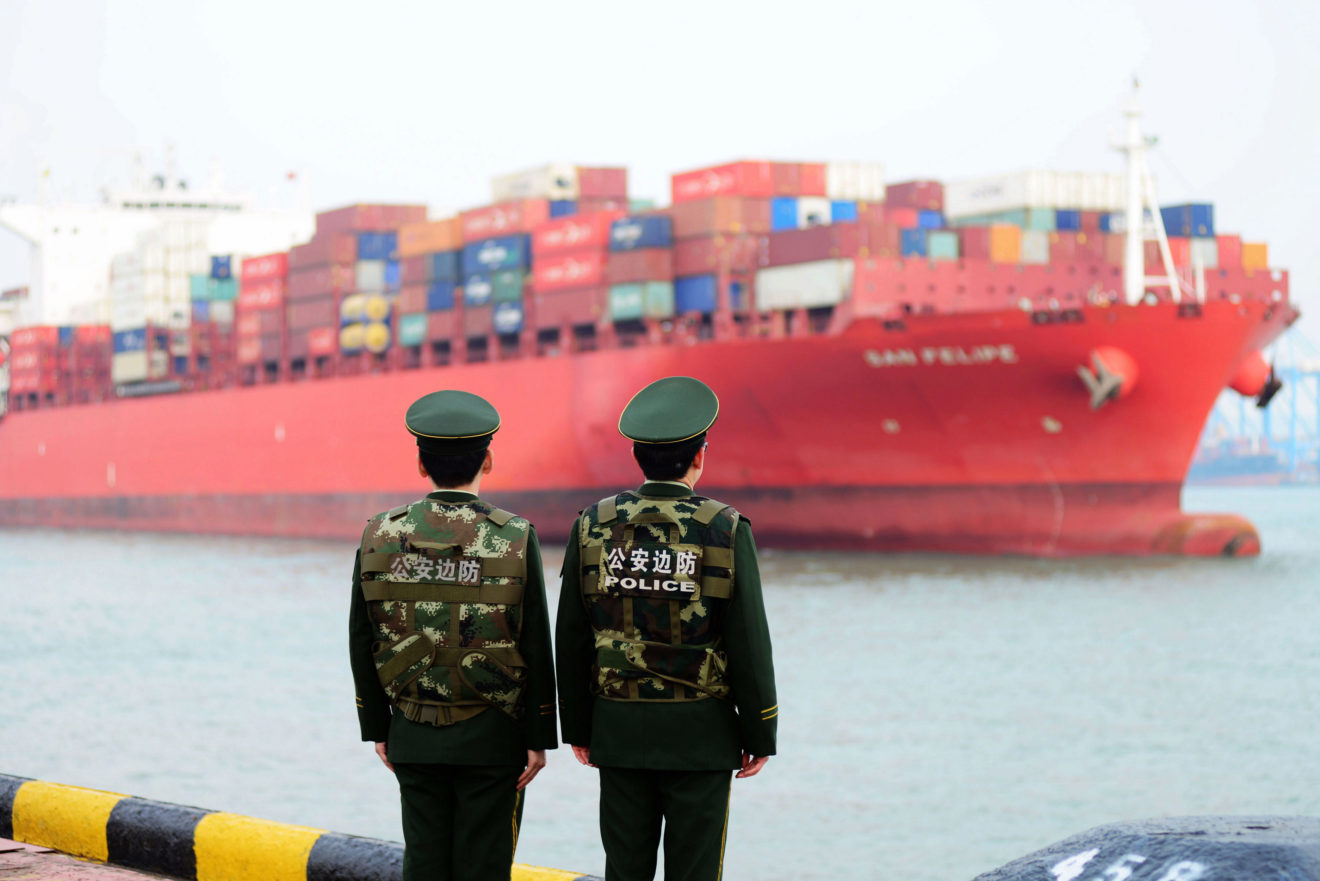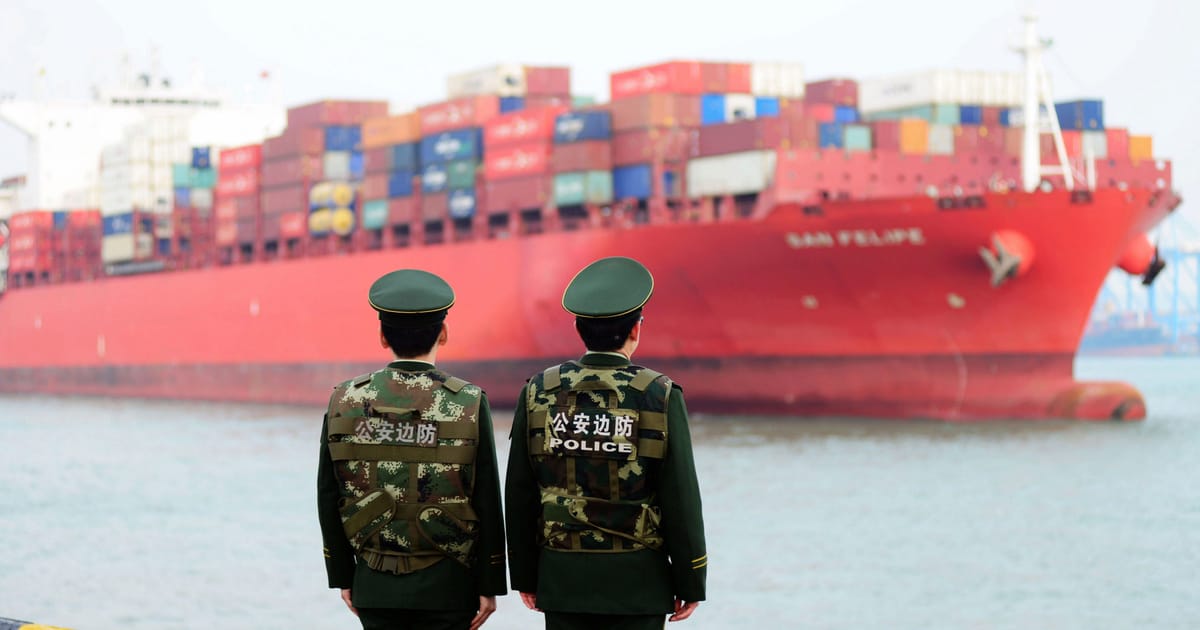China Displaces U.S. as the EU’s Largest Trade Partner
Published on July 14, 2021

How China Became the Largest EU Trade Partner
Historically, America has long been the EU’s top country to trade with, but in 2020, that trend came to a screeching halt.
A $26.7 billion boost for Chinese imports, in addition to a $5.3 billion increase in EU exports, has resulted in China officially becoming the EU’s largest trade partner.
This data looks at a decade of growing trade between the EU and China.

Playing Catch Up
Displacing the U.S. as a trade partner serves as yet another reminder that China is playing catch up to America’s economy. In 2020, there was an approximate $5.6 trillion gap in nominal GDP between the two nations. A decade ago, the gap was larger at $9 trillion.
The gap continues to shrink due to the differing growth rates in GDP. Between 2010-2020, U.S. nominal GDP growth was in the 1-2% range. During the same time, China’s GDP growth ranged from a high of 10.6% to a low of 6.1%.
An Economic Love Story
If you’re counting on China to run out of stuff to sell, don’t hold your breath. China is a manufacturing titan, and has become a top trading partner of 128 countries. EU imports from China grew 35% in the last decade, and overall imports were worth around $463 billion in 2020.
The EU buys much more from China than what it sells. Exports valued at $245 billion make up just over half (52%) of what it imports. As a result, the EU has a ballooning trade deficit.
Past Rivals
Challenging the U.S. for the economic throne is hardly a new endeavor. In the post-WWII era, Japan experienced a similar economic trajectory. And at the time, concerns about Japan surpassing America were alive and well. At one point, Japanese equities collectively represented some 46% of global stock market capitalization, and the value of the Imperial Palace in Tokyo was notionally worth more than all the real estate in California.
But eventually things began to subside, and a new challenger in China emerged. Today, China is experiencing similar milestones that hint at a growing economic power. Such as Beijing becoming the top city for global billionaires.
Will the 21st century mimic the 20th? Or will we witness the U.S. fall from the top of the economic food chain?

 www.visualcapitalist.com
www.visualcapitalist.com
Published on July 14, 2021
How China Became the Largest EU Trade Partner
Historically, America has long been the EU’s top country to trade with, but in 2020, that trend came to a screeching halt.
A $26.7 billion boost for Chinese imports, in addition to a $5.3 billion increase in EU exports, has resulted in China officially becoming the EU’s largest trade partner.
This data looks at a decade of growing trade between the EU and China.
Playing Catch Up
Displacing the U.S. as a trade partner serves as yet another reminder that China is playing catch up to America’s economy. In 2020, there was an approximate $5.6 trillion gap in nominal GDP between the two nations. A decade ago, the gap was larger at $9 trillion.
The gap continues to shrink due to the differing growth rates in GDP. Between 2010-2020, U.S. nominal GDP growth was in the 1-2% range. During the same time, China’s GDP growth ranged from a high of 10.6% to a low of 6.1%.
An Economic Love Story
If you’re counting on China to run out of stuff to sell, don’t hold your breath. China is a manufacturing titan, and has become a top trading partner of 128 countries. EU imports from China grew 35% in the last decade, and overall imports were worth around $463 billion in 2020.
The EU buys much more from China than what it sells. Exports valued at $245 billion make up just over half (52%) of what it imports. As a result, the EU has a ballooning trade deficit.
Past Rivals
Challenging the U.S. for the economic throne is hardly a new endeavor. In the post-WWII era, Japan experienced a similar economic trajectory. And at the time, concerns about Japan surpassing America were alive and well. At one point, Japanese equities collectively represented some 46% of global stock market capitalization, and the value of the Imperial Palace in Tokyo was notionally worth more than all the real estate in California.
But eventually things began to subside, and a new challenger in China emerged. Today, China is experiencing similar milestones that hint at a growing economic power. Such as Beijing becoming the top city for global billionaires.
Will the 21st century mimic the 20th? Or will we witness the U.S. fall from the top of the economic food chain?

China Displaces U.S. as the EU’s Largest Trade Partner
China has spearheaded its economy towards a global superpower, and as a result, has overtaken the U.S. as the EUs top trade partner
 www.visualcapitalist.com
www.visualcapitalist.com





